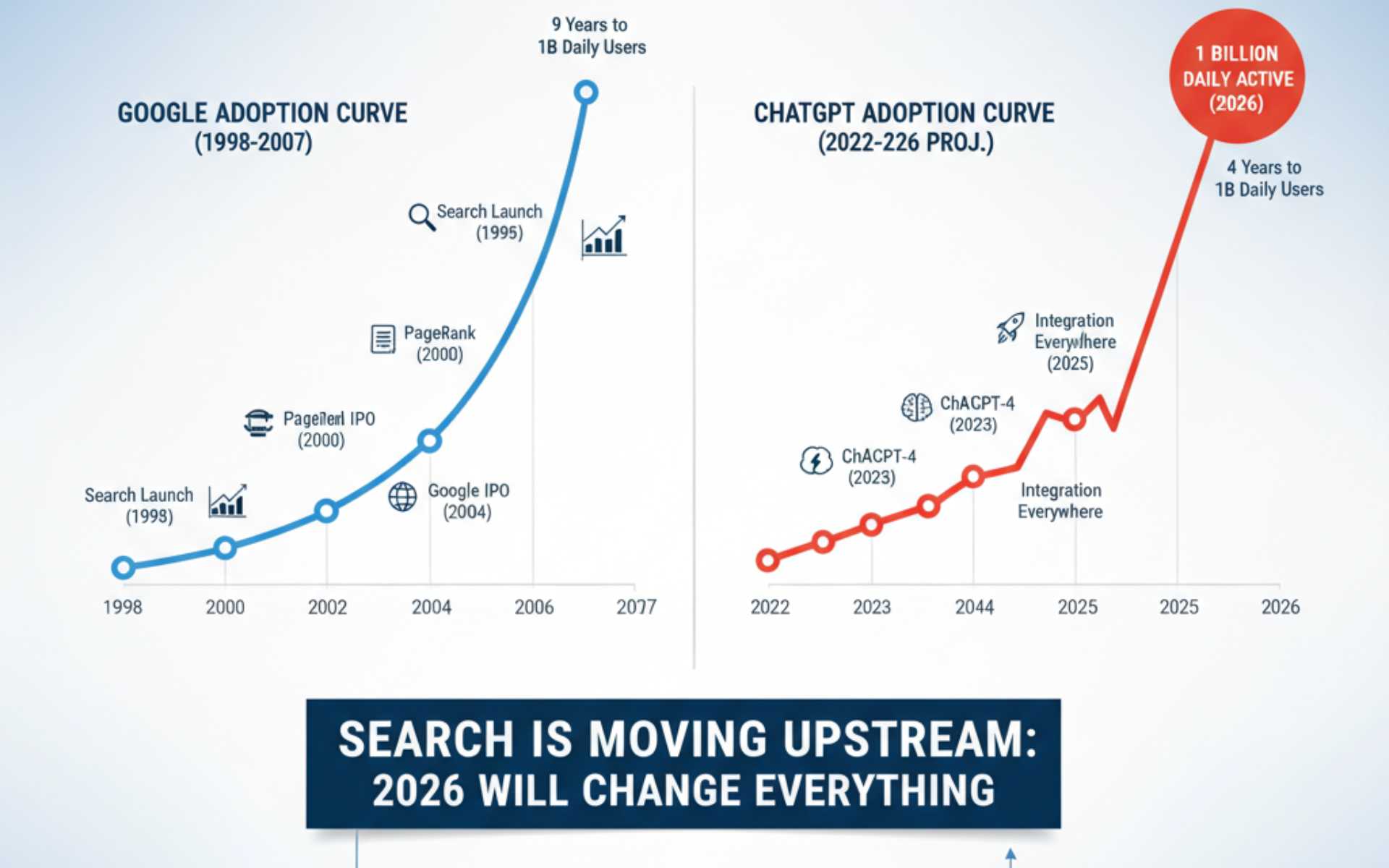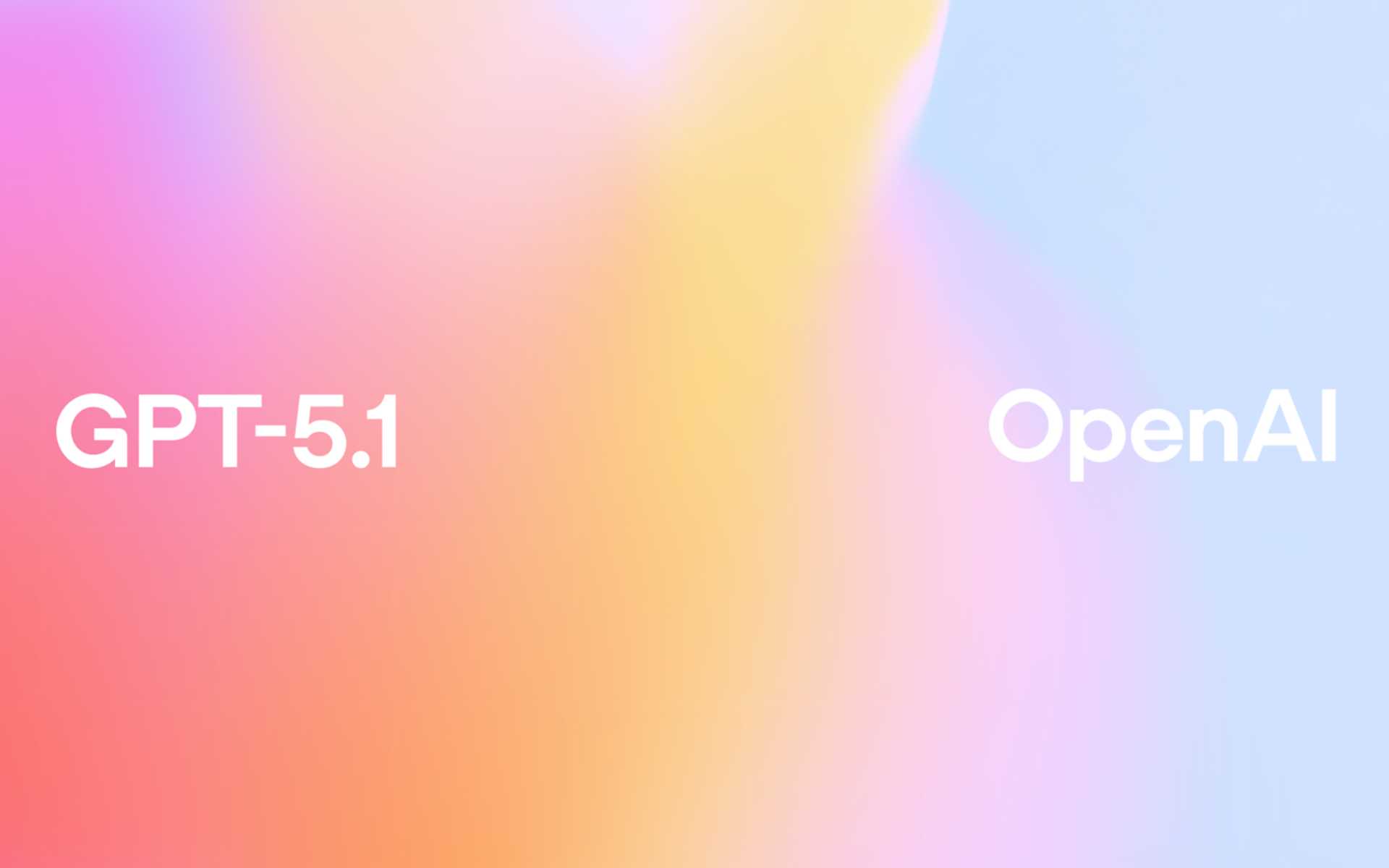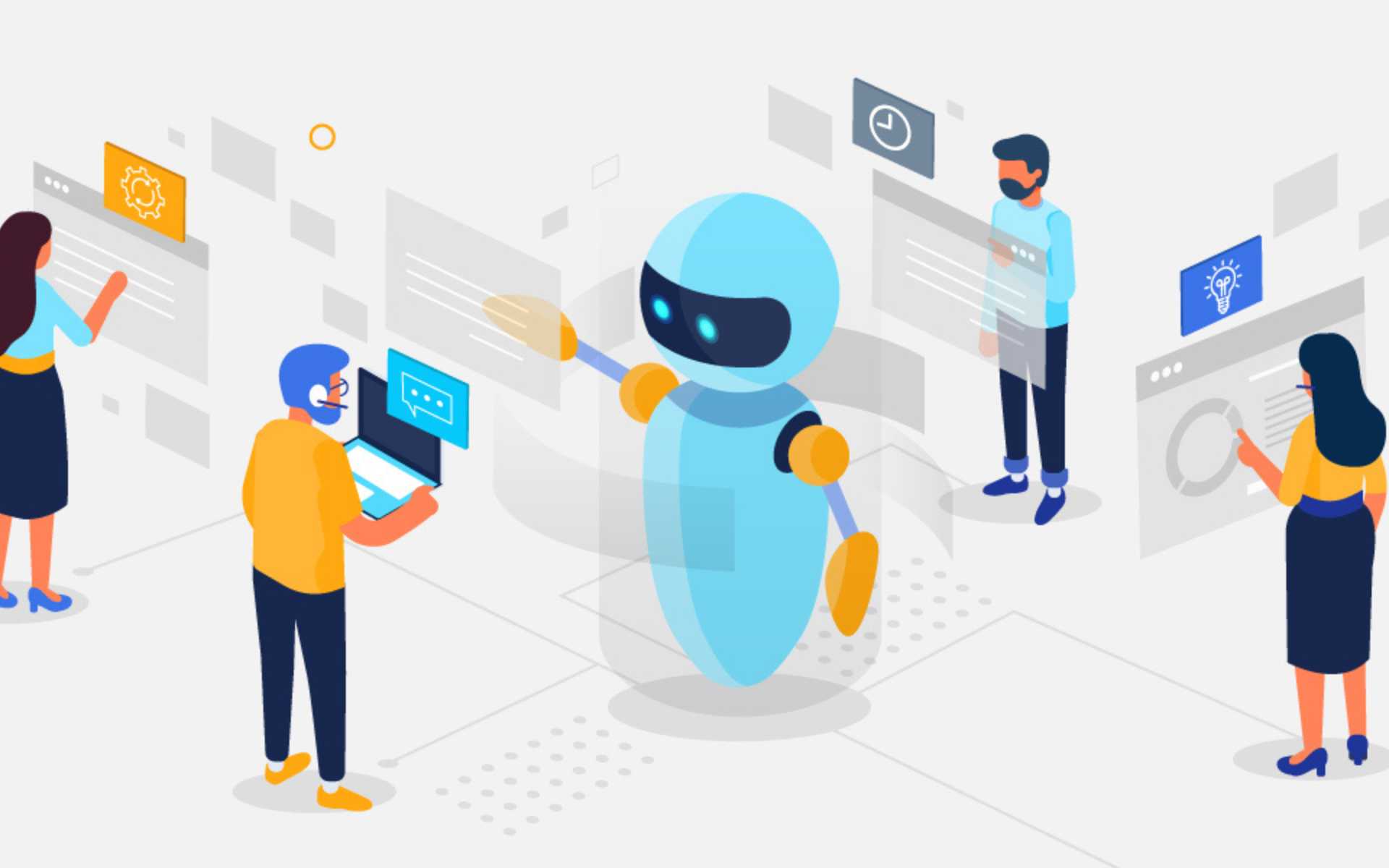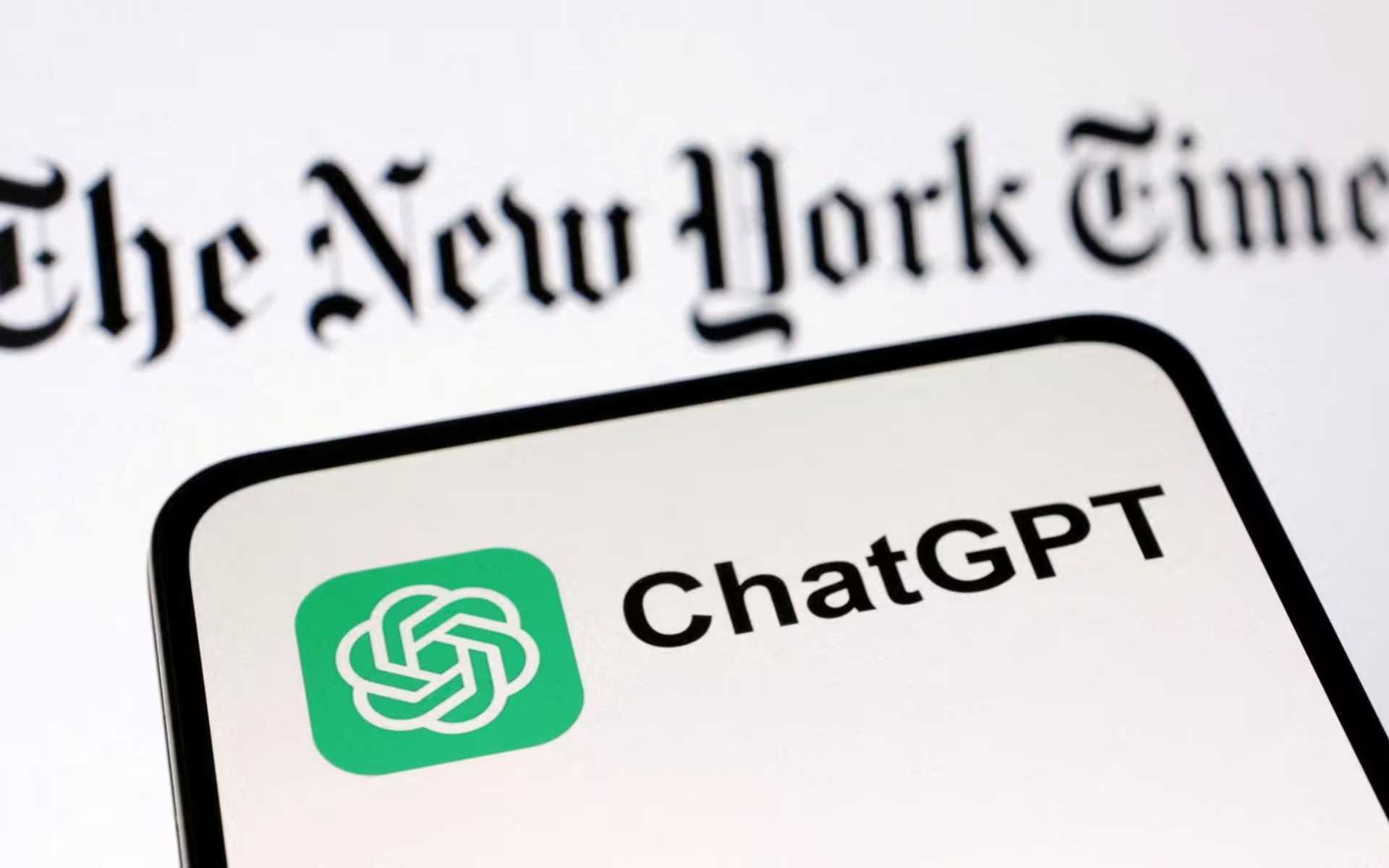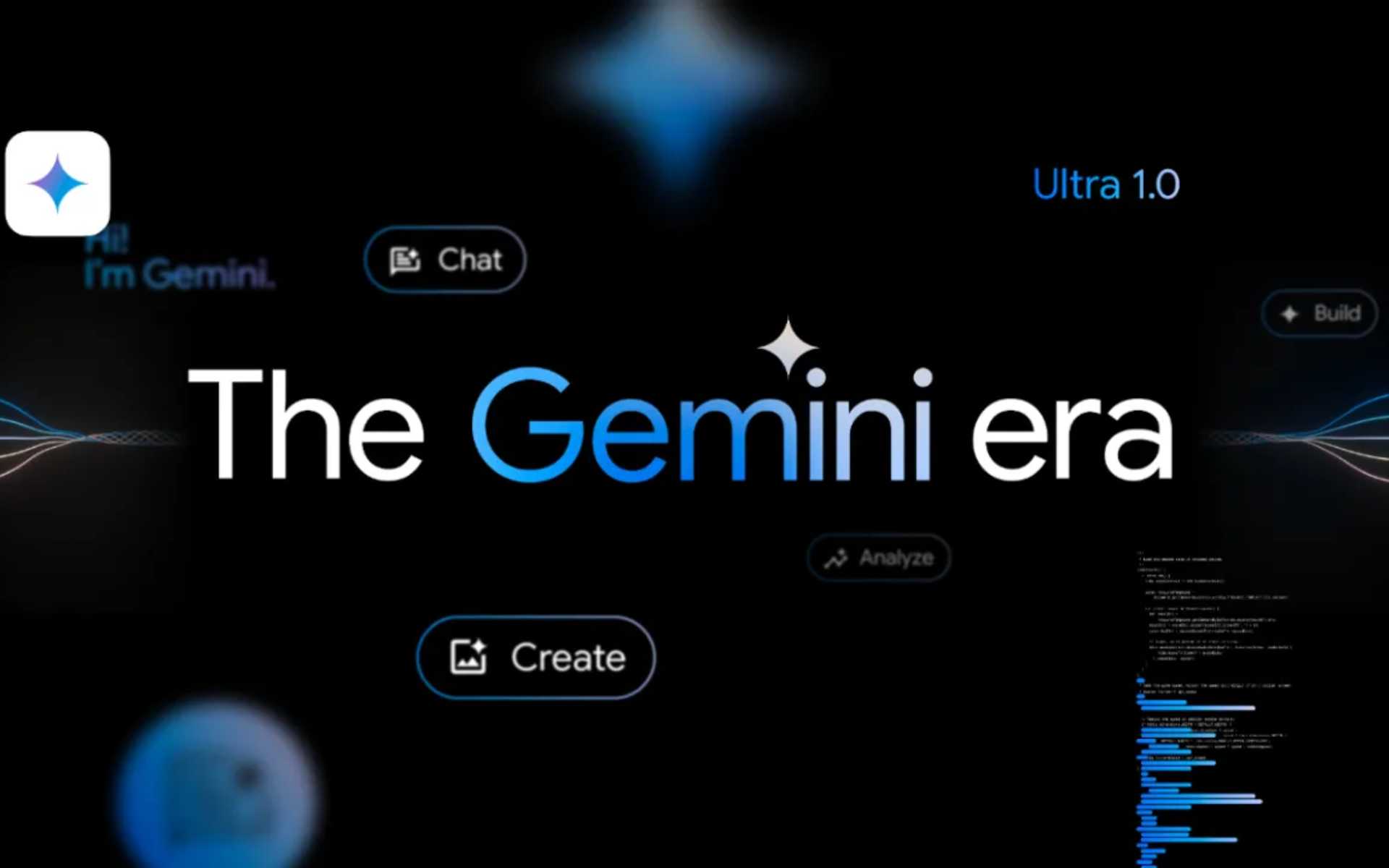In the evolution of digital search, few shifts will be as transformative as the rapid adoption of AI assistants. ChatGPT-class tools are on track to reach mass adoption in just four years — a milestone Google took nearly nine years to achieve. This acceleration is not just a matter of technology adoption but a profound change in how people search, discover, and consume information.
A Comparison in Adoption Speeds
When Google launched in 1998, it took years to build its dominance in search. By 2007 — almost a decade later — Google had secured over 50% of the U.S. search market. ChatGPT, however, is following an entirely different path.
- November 2022: ChatGPT launched.
- January 2023: Reached 100 million monthly active users — in just two months.
- July 2025: Recorded nearly 700 million users sending 18 billion messages weekly — about 10% of the world’s adults.
- 2026 Projection: Barclays estimates ~1 billion daily active users.
This rapid pace represents a significant shift in consumer behavior. By late 2026, AI assistants will be integrated seamlessly into daily life — from smartphones to web browsers, workplace tools, and even everyday appliances.
Why 2026 Marks a Tipping Point
Several converging forces are setting the stage for 2026 to become a turning point for AI and search:
- Consumer Scale: Barclays projects AI assistants will surpass 1 billion daily active users.
- Enterprise Integration: Gartner forecasts that by 2026, 40% of enterprise software will include embedded AI agents.
- Infrastructure Expansion: Citi estimates $490 billion in AI infrastructure investments in 2026.
- Capability Enhancements: AI models will be able to produce deeper insights and execute complex tasks.
The result: assistants won’t just answer questions; they’ll perform actions, anticipate needs, and transform the way people approach search.
What This Means for SEO

The mass adoption of AI assistants will change the SEO landscape profoundly. Three major shifts stand out:
- Zero-Click Search Surfaces Expand: Answers will appear directly inside assistant interfaces, reducing the need for users to click through to original sites.
- Chunk-Based Retrieval Supersedes Traditional Ranking: Assistants prioritize short, clearly structured sections of content that directly answer queries instead of long-form, keyword-stuffed pages.
- Machine-Validated Authority Matters More: AI systems favor content that is structured, authoritative, verifiable, and enriched with schema markup, citations, and clear authorship.
For businesses, this means visibility will depend less on traditional SEO ranking factors and more on how well content is structured for AI retrieval.
Enterprise Implications
The enterprise sector will see an even sharper change. AI agents integrated into workplace software will act as decision-making hubs. Tools like Microsoft Copilot and Salesforce Einstein will pull directly from structured documentation, potentially bypassing traditional brand touchpoints.
If your product information, case studies, or technical documentation isn’t optimized for machine readability, it risks being invisible at the moment of decision-making.
Preparing for the AI-Driven Future
SEO strategies must evolve to prepare for this shift:
- Structure Content in Assistive Chunks: Create sections of 150–300 words with clear claims, supporting evidence, and citations.
- Implement Rich Schema Markup: Include FAQ, HowTo, TechArticle, and Product markups with canonical versions.
- Optimize Documentation: Make help centers, manuals, and guides easy for AI to parse.
- Provide APIs and Structured Data: Allow AI agents to work with your information directly.
·Monitor AI Citation: Track how your brand is referenced by AI assistants and optimize accordingly.
Final Thoughts
The adoption of AI assistants will fundamentally change search visibility by moving it upstream to the data layer. By 2026, assistants won’t be optional tools — they will be embedded in the very fabric of how people work, learn, and shop. Brands that prepare today will be best positioned to thrive tomorrow.
